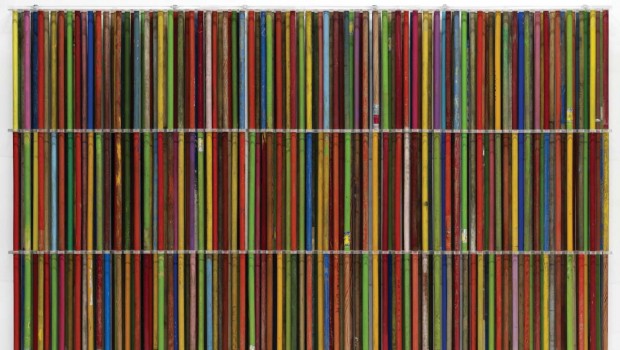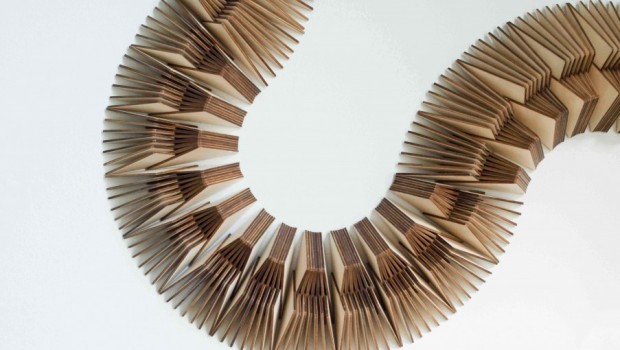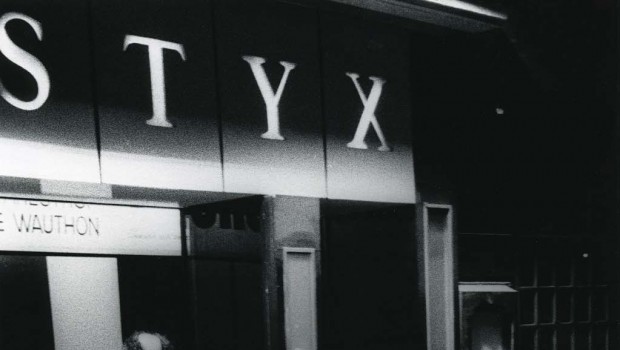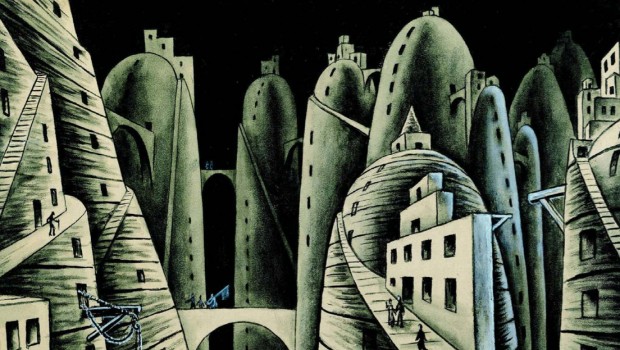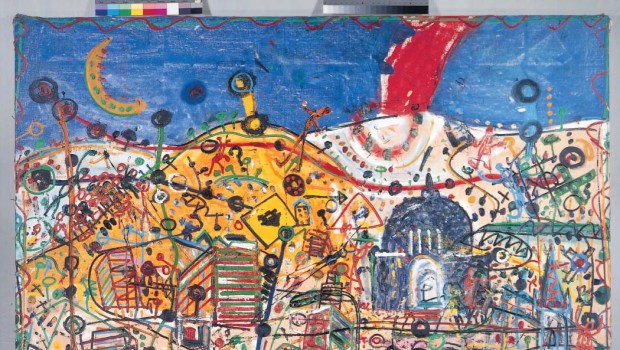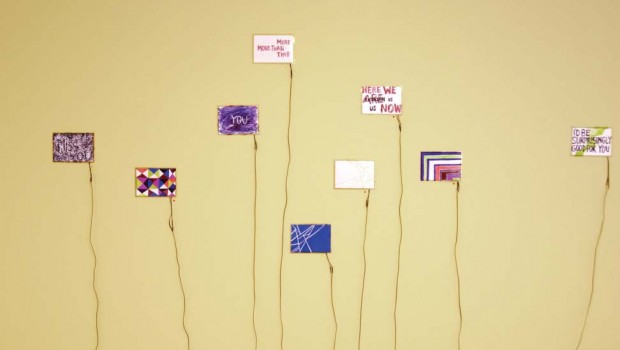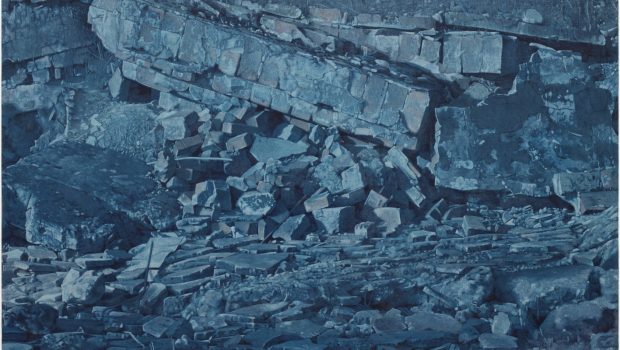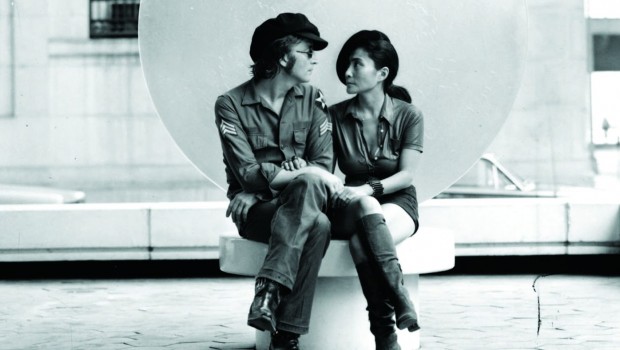Mari Carmen Ramirez: Tenth Anniversary of the Latin American Department
MFAH
Download Complete PDF / Descargar
In May 2001 the MFAH established the first curatorial Department of Latin American Art in The United States. This was an extraordinary event for Latin American culture as it was the only center of its kind in the USA. Although a similar program was created at the University of Texas in Austin in the 60s, this was only a department within a department. Is the MFAH’s Latin American Department still the only one of its nature?
MCR: The MFAH’s Latin American and Latino art initiative, as embodied in the Latin American Art Department and the International Center for the Arts of the Americas (ICAA), is a four-pronged undertaking comprising the following key areas: collection-building, exhibitions, research, and education. While a number of museums in the United States have appointed curators of modern and contemporary Latin American art in recent years, very few have established specialized departments and not one of them boasts a research center like the ICAA. Indeed, to my knowledge, no other museum has come close to matching the broad scope of the Latin American Art Department and ICAA’s mission and programmatic range. Nor have they equaled the depth of commitment and resources that the MFAH has invested in this area.
The concept of a Latin American Center was first introduced for two reasons: one, to acquire works of art for the museum collection and exhibitions and to create a research center dedicated to surveying Latin artists, movements and trends. What were the goals at that time and how many of them still need to be accomplished?
Today the collection comprises more than four hundred works, including the prestigious Adolpho Leirner Collection of Brazilian Constructive Art. These works build upon other holdings at the museum, particularly in the areas of Photography, Prints and Drawings, and Modern and Contemporary Art…
MCR: Most of the goals that we outlined ten years ago have been achieved, or are in the process of being achieved. With regards to collection-building, for example, the MFAH set out to aggressively build an exemplary collection of Twentieth-and Twenty-first Century Latin American art. Today, the collection comprises more than four hundred works, including the prestigious Adolpho Leirner Collection of Brazilian Constructive Art. These works build upon other holdings at the museum, particularly in the areas of Photography, Prints and Drawings, and Modern and Contemporary Art where my colleagues Anne Tucker, Barry Walker and Alison Greene have been actively pursuing works by Latin American artists. This brings the total works of art by Latin American and Latino artists in the MFAH collection to over 1400 works. The museum has also established innovative, long-term partnerships with the Gego Foundation, the Cruz-Diez Foundation, and the Capriles Brillembourg Collection of Latin American Art. These multifaceted partnerships involve collection- sharing, exhibitions, research, publications, and conservation efforts, as well as the creation of a special fund for acquisitions in under-represented areas such as Central American and Caribbean art. In the area of exhibitions, we have organized 14 shows since 2001. These include landmark exhibitions like Inverted Utopias: Avant-Garde Art in Latin America, 1920-70 or Hélio Oiticica: The Body of Color, that attracted international attention to Houston. The majority of these exhibitions introduced little-known or underrecognized values to the U.S. art scene.
Ten years ago, when I had the opportunity to talk to you, you mentioned that the discipline of Latin American Art did not formally exist in the USA. It was only emerging. Latin American Art was not taught at universities and it did not have a distinct interpretation. Do you think after ten years Americans have a better understanding of its essence?
MCR: Latin American art is a relatively new field of knowledge and collecting in the United States, and in many ways can still be considered an emergent field. However, the field has grown significantly over the last ten years as more and more universities, museums, and collectors seek access to its first-rate (yet still under-recognized) artists. This has led to the increased “mainstreaming” of this art. Several factors can be credited for this growth: globalization has transformed Latin American art from a marginal investment into a strategic economic resource creating an enormous demand for the art of this region; on the other hand, the tremendous growth of the Latino population in the United States has also generated a demand on the part of these new audiences for representation in museum and institutional collections while at the same time stimulating young Latinos to engage in careers in the arts. I predict that ten to fifteen years from now, Latin American art will have been completely assimilated into the mainstream academic and museum culture.
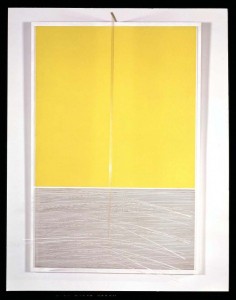 What role have the Latin Maecenas program (also your idea) played in this perception, the museum collection and the department? And what role has the MFAH played with the collectors?
What role have the Latin Maecenas program (also your idea) played in this perception, the museum collection and the department? And what role has the MFAH played with the collectors?
MCR: One of the most significant outcomes of the launching of the Latin American program at the MFAH was the consolidation of an enthusiastic, forward-looking community of Latin American art collectors–the Latin Maecenas– that, with a few notable exceptions, was literally non-existent ten years ago. This community is not limited to Houston but–by way of vividly exemplifying the fluidity of today’s global artistic circuits–extends as far south as São Paulo, Santiago and Buenos Aires. It is precisely that multifarious mix that lends the particular zest and spark to the group’s profile and activities. Above all, this is an independentminded group of individuals brought together first, by their passion for knowledge and, secondly,by their evolving interests and strong ties–family, business, or professional-related– to Latin American art and culture. The Latin American Art Department has served as the catalyst for this group by educating its members through lectures and seminars by guest artists, critics, and collectors, traveling with the group to art fairs, auctions, and exhibitions in Latin America, the U.S., and Europe, and providing one-to-one advice to its members on potential accessions or ways to develop their collection over the long-term. The results of this effort could be vividly appreciated in the recent exhibition Cosmopolitan Routes: Houston Collects Latin American Art curated by my colleague Gilbert Vicario. The show presented one hundred and forty works culled from the collections of the Latin Maecenas members. The selection covered an impressive range of modern and contemporary art from all of Latin America and stands as a testimony to the sophisticated level, of collecting that has come to characterize this enthusiastic group of Latin American art patrons.
When the international circuits, grants and exhibitions started for this art, this demand was accompanied by a trend towards the exotic. Artists like Frida Kahlo were recovered. Stereotypes, however, were created at the same time. How many other artists has your department recovered,and how many others do you plan to recuperate? Has it been hard to go against stereotypes and what the public in general expects from you?
MCR: When we started out in 2001, the prevailing stereotypes were Frida Kahlo and the Mexican Muralists. Everyone, particularly in Texas, associated Latin American art with these artists. While not necessarily excluding Mexican art from our program, we set out to show the vast richness of the visual arts in Latin America. It is important to remember that this region consists of more than twenty countries with hundreds of ethnicities and indigenous groups. Hence, it is impossible to reduce the artistic production of such a complex region to one or even a few choice artists and, least of all, to one single country. Our program focuses on cutting-edge creators from South America, particularly from Argentina, Brazil, Chile, Uruguay, Venezuela, Peru, Colombia and Latino USA. A common trait of the artists we have shown is that they not only produce high quality art but they have pushed the limits of art itself to a different level yielding in the process highly innovative works. They are innovators within their own spheres of activity and their contribution extended beyond Latin America; that is, it had an impact on Twentieth Century art. Previously under-recognized artists we have presented or collected include, among others: Gego, Hélio Oiticica, Carlos Cruz-Diez, Gyula Kosice, Julio Le Parc, Abraham Palatnik, Beatriz González, Waldemar Cordeiro, Tunga, Julio Alpuy, and Luis Felipe Noé. Among the contemporary artists, the museum was the first to incorporate works by Teresa Margolles, Daniel Martínez, and Elías Crespín. We have also recently purchased three monumental sculptures by Luis Jiménez.
Your work at the department has been instrumental in bringing the unknown to the realm of universal art. You recently were chosen as one of the most infl uential Hispanics by Time Magazine. How do you “choose” the artists and how do you deal with such huge responsibility? Can you explain the process by which you select the artists?
MCR: The selection relies on my experience of over 30 years dealing directly with artists and their production as well as on the solid foundation provided by research. The accumulation of experience and knowledge allows you to look at an artist’s work in order to determine its significance vis-à-vis other artists of his or her generation. Once you have determined this, it is easier to assess its potential value for the MFAH Latin American art initiative. At the same time, it is important to have a road map. In my case, the exhibition Inverted Utopias: Avant-Garde Art in Latin America, 1920-1970 (co-curated with Héctor Olea) which we presented in 2004 provided the initial road map for the collection and exhibition efforts I undertook at the MFAH.
Until now you’ve exhibited artists like Gego, Helio Oiticica, Leon Ferrari, Jesus Rafael Soto, etc. One of the exhibits that’ll be part of the commemoration of the tenth anniversary of the department is Carlos Cruz Diez’s scheduled for spring and summer. What are the future plans of the department?
MCR: The next two years will be extremely busy. We plan to devote most of 2012 and 2013 to a cycle of exhibitions based on the permanent collection as well as on new accessions. As I said earlier, the collection has grown very quickly over the past few years and since we lack permanent exhibition galleries, our audiences have not been able to really appreciate its growth. This will be a chance to expose them to the exciting artists and works that have made it into the collection. As early as Fall 2011 and Spring 2012, we will also carry out a collections exchange with MALBA (Museum of Latin American Art, Buenos Aires). As part of this exchange, MALBA will show a selection of works from our permanent collection at their beautiful building in Buenos Aires, and we will show in Houston a number of their extraordinary holdings of Twentieth Century Latin American art. MALBA and the MFAH have been museum partners since 2005, and both institutions are celebrating a decade of activity in Latin American art. In 2012, we will also be presenting for the first time the Capriles Brillembourg Collection of Latin American Art, which has been recently placed on long-term loan at the MFAH. This is a beautiful collection that features works by well-known masters like Wifredo Lam, Matta, Diego Rivera, Joaquín Torres-García and Rufi no Tamayo, among others. To close 2012, we will be installing the monumental Houston Penetrable by Jesús Rafael Soto. This specially commissioned work was Soto’s last undertaking and was designed specifi cally for the Caroline Wiess Law building’s Cullinan Hall.
To the extent that both the digital archive and the book series will make available for the first time sources that are critical to Latin American and Latino art history, we expect them to have a transformative effect on the field of Latin American and Latino art…
Ten years ago you told me, and I quote: “ the goal is to develop a consciousness about Latin American artists and to achieve a sound understanding of it. It’s not about presenting exhibitions, but rather, establishing a solid project that will provide lasting, long-term results”. How many publications, documents and books have been created in these last 10 years? Can you also talk of your future plans in this realm?
MCR: Since 2001, the International Center for the Arts of the Americas (ICAA has) not only published fourteen books and catalogues but also has organized the monumental initiative Documents of Twentieth-Century Latin American and Latino Art: A Digital Archive and Publications Project. The latter brings together a network of close to one hundred researchers located in ten Latin American and U.S. cities who for the last six years have been recovering, scanning, cataloguing, and uploading primary documents to an Internetbased website, where they will be available free of charge to users worldwide. The main objectives of this program are to make accessible the intellectual production of twentiethcentury Latin American and Latino creators while simultaneously establishing the bases for a comparative history of Latin American and Latino art. To date, the teams have recovered almost 10,000 documents. We plan to publicly launch the website in November of this year. The launching will also coincide with the release of the first volume of the accompanying 13-volume book series, Critical Documents of Latin American and Latino Art, published with Yale University Press. To the extent that both the digital archive and the book series will make available for the first time sources that are critical to Latin American and Latino art history, we expect them to have a transformative effect on the field of Latin American and Latino art for years to come.
Posted: April 24, 2012 at 9:01 pm


